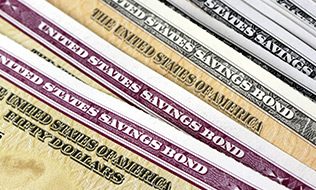

Even before the coronavirus began affecting capital markets, fixed income investors were becoming more risk averse, according to Invesco’s latest survey.
Close to half (43 per cent) of investors surveyed in late 2019 said they felt the then economic cycle had a year or less left to run and were adapting their portfolios accordingly. In some cases, this change in positioning may have been a boon to investors hit with a sudden market crisis.
“Concerns were focused on credit spreads and liquidity, areas that have been significantly tested across the market by the COVID-19 crisis,” said the report. “Widening spreads were the biggest macro concern, and this has come to the fore quickly, with sectors exposed to the pandemic such as consumer goods, autos and oil and gas experiencing widening spreads and steepening curves.”
Read: Canadian DB plans return negative 7.1% in first quarter
With the coronavirus pandemic compounding an already fairly gloomy mood, intentions for duration also reflected increased pessimism, with investors showing a bias towards lengthening. Indeed, 29 per cent said their expected change in duration over the next 12 months would be longer, up from 21 per cent in 2019’s report, while just 10 per cent said it would be shorter, down from 27 per cent. Even with a record drop in yields, investor expectations indicated they could fall still further, although just eight per cent thought U.S. rates could go negative.
In this incredibly low-yield environment, the large part of growth in fixed income allocations is appearing in higher-yield alternatives. Mainstays like government and investment-grade corporate bonds made up less of fixed income portfolios in 2020 than 2019 on average, ticking down from 43 per cent to 37 per cent and 36 per cent to 27 per cent, respectively. Meanwhile, emerging market debt saw some of the highest growth, up from three per cent to six per cent, while high-yield corporate debt rose from four per cent to seven per cent. Municipal agency and non-government organization bonds, asset-backed securities and structured credit, direct lending, bank loans and real estate debt all saw small increases as well.
Read: What are the implications for pension funds coming out of coronavirus crisis?
However, underneath this trend toward alternatives, the report noted divergence in investor behaviour as 63 per cent of lower risk investors upped their allocations to core assets, while 53 per cent of high risk investors decreased them. As well, 65 per cent of lower risk investors expressed concerns over liquidity and more than a third (36 per cent) of higher risk investors shared this concern.
“Since the global financial crisis, regulations such as Dodd-Frank have led to reshaping of fixed income markets, with banks holding less inventory on their balance sheets and much of the slack picked up by customer-to-customer platforms managed through intermediaries,” said the report. “By facilitating trading directly between customers, this model has helped bring down spreads and reduce costs. However, volatility in the opening months of 2020 is proving the first serious test of this model and the ecosystem of products within it.
“This transformation in the way fixed income securities are traded has been aided by the development of exchange-traded funds, which are widely used across [those surveyed]. ETFs are valued for offering liquidity alongside the convenience of instant diversification at relatively low cost. This is seen as valuable in allowing investors to quickly target a diverse range of interest rate and credit risks, facilitating a range of new strategies. In the face of volatility arising from the COVID-19 pandemic, this liquidity is being tested. However, by facilitating continued trading during a period of significant uncertainty, ETFs have acted as a key source of price discovery in markets that might have otherwise entirely seized.”
Read: Why pension funds should have boots on the ground globally
As for which securities investors are favouring as some move further long the risk spectrum, interest in emerging market debt has seen rapid growth. Indeed, 72 per cent of survey respondents said they’ve allocated to the asset class, up from 49 per cent in the 2019 survey. Lately, however, investors are more often choosing to zero in on specific countries than using a broader mandate. Indeed, 63 per cent of investors said they prefer country-specific allocations to emerging markets, while 22 per cent prefer a broader strategy and 15 per cent were neutral.
Looking to environmental, social and governance concerns, almost half (46 per cent) of investors said they believe the adoption of ESG helped their fixed income portfolio, while just three per cent said it hindered it. Specifically within their fixed income investments, 75 per cent of investors said social responsibility was a motivating factor in integrating ESG, followed by stakeholder wishes (67 per cent) and alignment with beneficiary beliefs (60 per cent). Half (50 per cent) cited return enhancement as a motivating factor.
“In 2019, our study found most investors chose not to purchase ESG-specific products whereas today half own them and 80 per cent are anticipating making new/additional investments in the future,” said the report. “While green bonds are the most common, interest has also expanded across the full range of offerings with a third of investors having bought social and sustainable bonds.”
